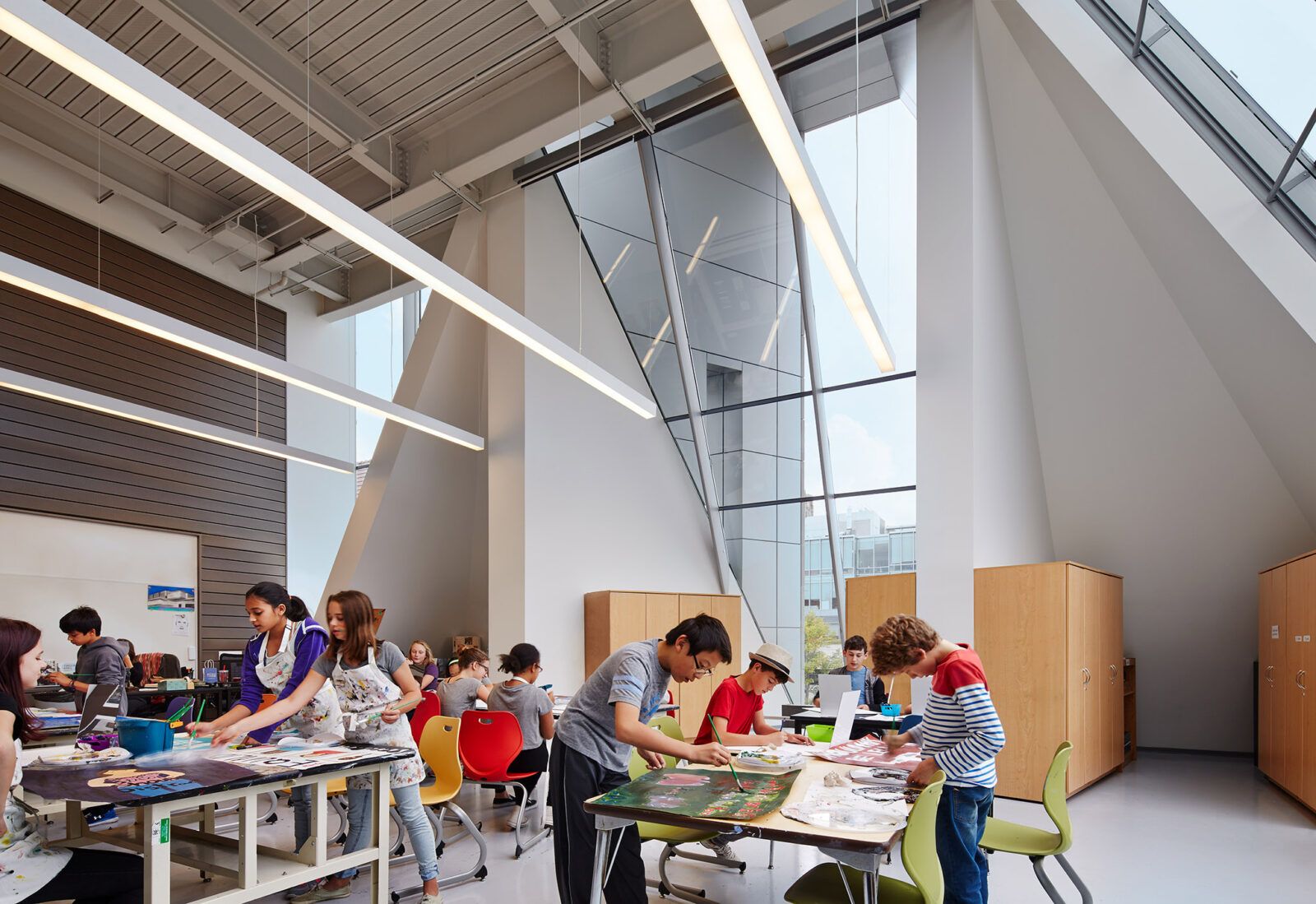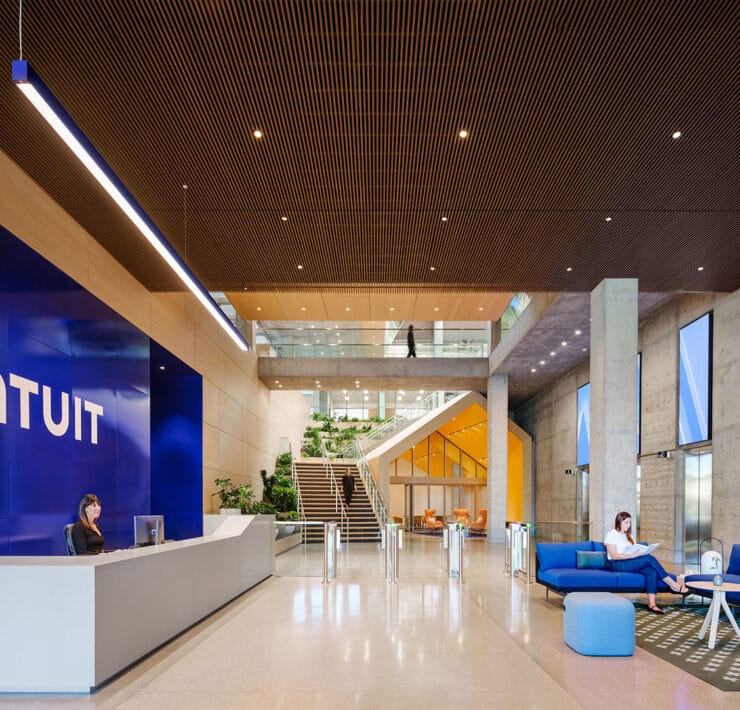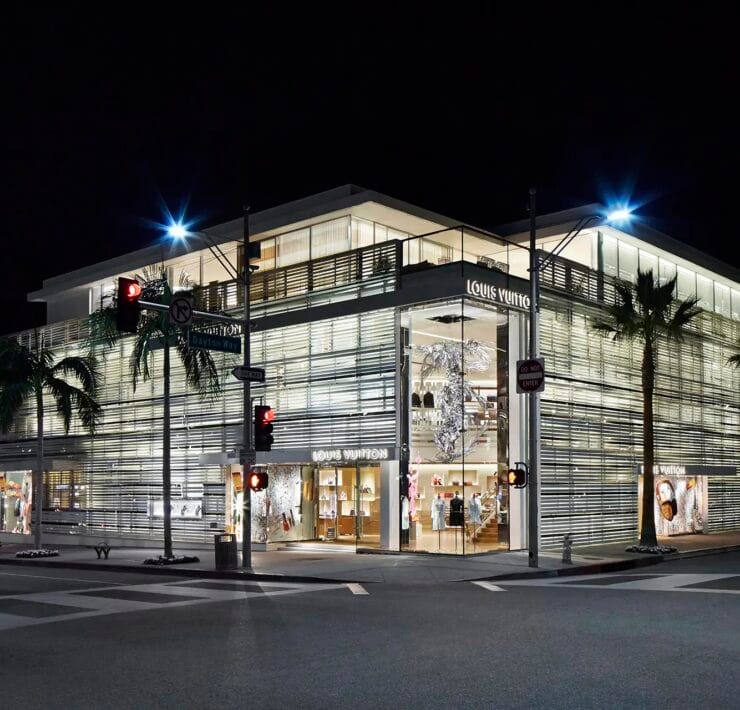The health benefits of sunlight are countless.
When it comes to physical well-being and mental health, sunlight provides essential vitamin D, promotes healthy bones and skin, and improves one’s mood.
Most people, however, work indoors during daylight hours.
With a combination of high-CRI, color-tunable LED lighting products, daylight harvesting and a floor plan that includes natural light sources, such as skylights and windows, you can upgrade your work or office lighting to provide many of the benefits of working outdoors under natural daylight.
Table of contents
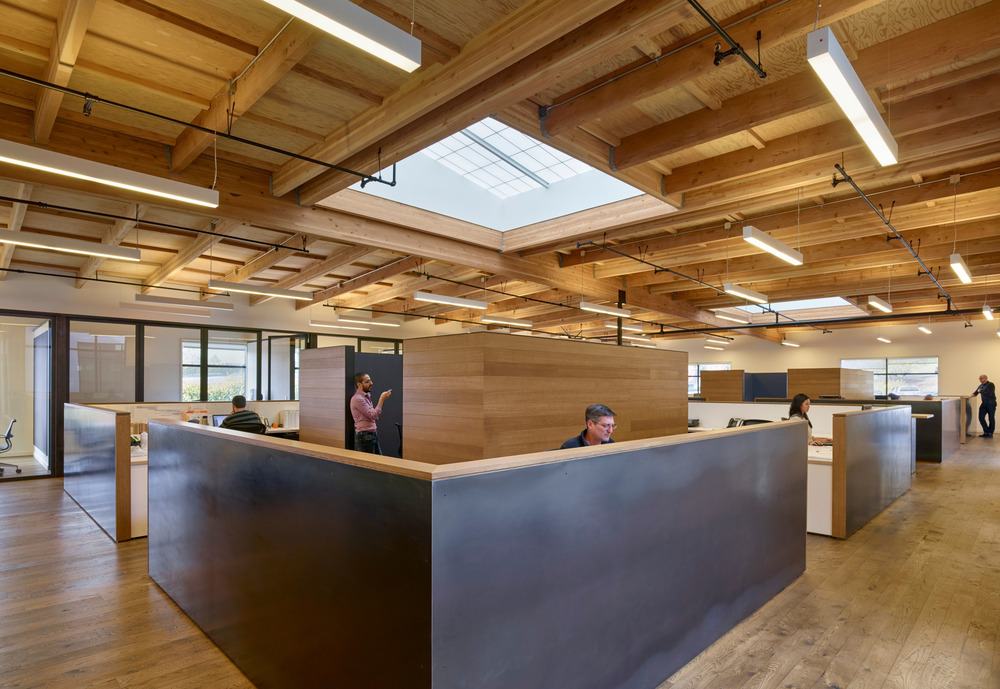
The health benefits of sunlight
Absorbing natural sunlight for Vitamin D synthesis is important. Sunlight stimulates melatonin production and wake/sleep cycles, which aids in better quality sleep, improving alertness during the daytime.
Exposure to sunlight offers an additional range of health advantages, including:
- Providing essential Vitamin D to strengthen the immune system against illnesses such as colds, influenza and allergies, as well as autoimmune diseases
- Maintaining the circadian rhythm, which regulates the sleep/wake cycle
- Fighting depression, particularly seasonal affective disorder (SAD)
- Healing wounds (during World War I, Dr. Oskar Bernhard used sun therapy to treat soldiers’ wounds which prevented gangrene and tetanus)
- Helping the body to create endorphins, which relieve stress and raise energy levels
Research shows that employees who work in an office with more natural lighting sleep an average of 37 minutes longer per night than office workers who don’t get any exposure to natural light. Also, the positive effects of sunlight accumulate throughout the week, as evidenced by workers’ cognitive tests in which they scored 42 percent higher.
The conclusion? It’s reasonable and logical to recognize that natural lighting in the workplace results in improved well-being and increased productivity.
The use of daylighting
According to the National Institute of Building Sciences, daylighting is the “controlled admission of natural light, direct sunlight and diffused-skylight into a building to reduce electric lighting and saving energy.”
“By providing a direct link to the dynamic and perpetually evolving patterns of outdoor illumination, daylighting helps create a visually stimulating and productive environment for building occupants, while reducing as much as one-third of total building energy costs.”
—Gregg Ander, Chief Architect of Southern California Edison
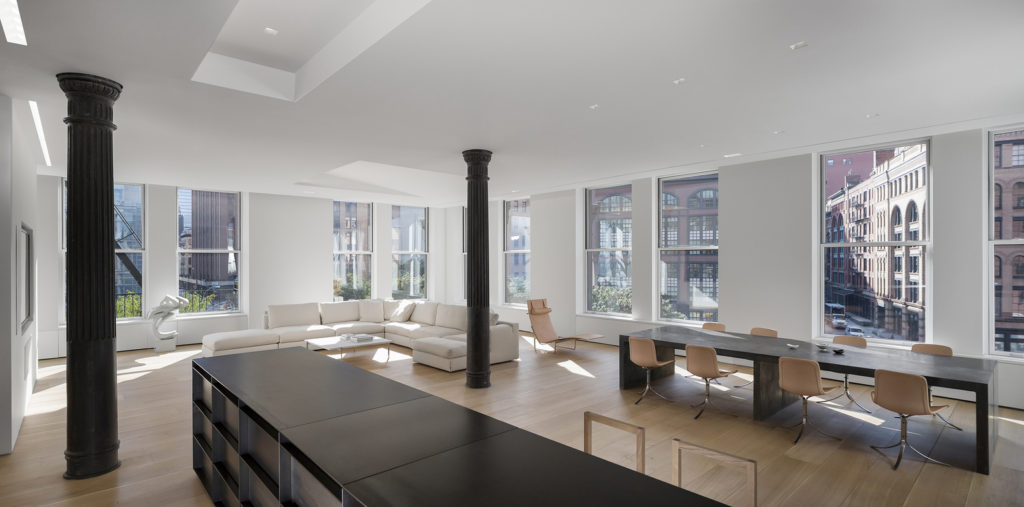
Before the 1950s, the main source of light for most commercial buildings was natural light; they were actually built around this concept. But after the ‘50s, with the invention of fluorescent lighting, building design was altered. For example, buildings no longer used high ceilings to accommodate ceiling-to-floor windows for greater natural light exposure.
Forty years later, in the 1990s, building designers and architects revisited this concept. For instance, when a new Walmart was built in Oklahoma, half of it leveraged daylighting with skylights while the other half used artificial lighting. Sales tracking showed that the half of the store illuminated with natural light saw significantly higher sales.
A successful daylighting system (or lighting control system) is not just about using skylights and windows; it’s also about using a daylight-responsive lighting control system to take advantage of sunlight when it’s available or electrical light when it’s not.
Daylighting systems are available for residential, commercial and industrial buildings and have a variety of lighting features, such as:
- LED Color-Tunable Products: adjusting color temperature to attune lighting with the natural progression of the sun
- Task Tuning: adjusting light intensity levels based on space requirements
- Daylight Harvesting: automatically adjusting electrical lights’ brightness in response to degrees of available natural light
- Occupancy Sensing: automatically activating lights when people enter a space and deactivating (or dimming) them) after people depart
- Scheduling: automating lighting at pre-set times, such as turning lights off in a workplace on evenings and weekends
- Dimming Control: adjusting lights’ brightness at the user’s discretion
- Vacancy Sensing: occupants manually turning on lights with a sensor automatically turning lights off when motion is not detected
Color-tunable lighting defined
Another LED lighting technology that can provide some of the benefits of sunlight is color tuning. Color-tunable lighting can adjust to suit individual preferences or specific application needs.
There are three types of LED color-tunable lighting technologies:
- Dim-to-warm (color temperature range 1,800K – 2,700K) mimics incandescent bulbs or candlelight
- Tunable-white lighting (2,700K – 5,000K) mimics sunlight
- RGBW (Red, Green, Blue, White) provides a full range of color wheel and tunable-white lighting
Tunable-white and RGBW lights can simulate the color temperature of sunlight throughout the day, transitioning from neutral white (3500K) in the morning to daylight (5000K) midday and then warm white (2700K) as the day ends. This progression supports productivity and a healthy circadian rhythm.
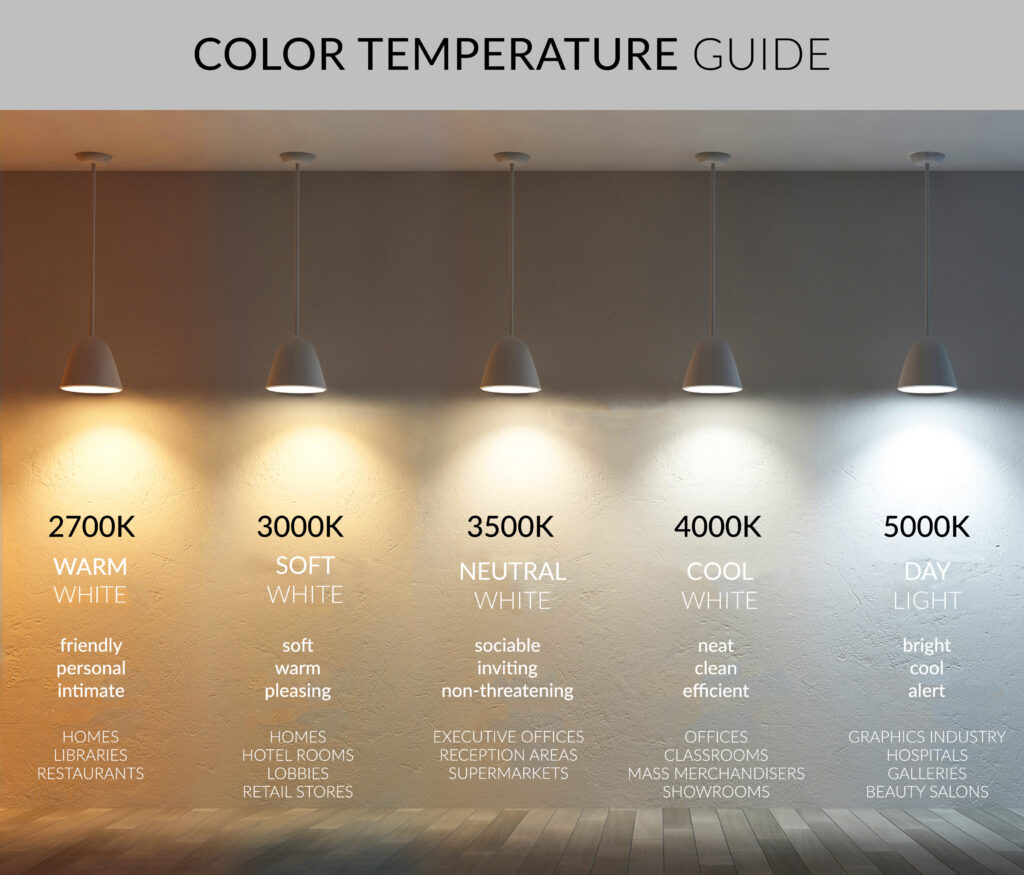
LED light vs. sunlight
It’s well known that LED light bulbs have long lifespans, consuming less power than incandescent light bulbs — sometimes as much as 90 percent less.
Yet it’s less widely known that LED bulbs provide indoor lighting that can mimic sunlight.
Natural light LEDs evoke the hue and intensity of natural sunlight and help to maintain the human body’s natural circadian rhythm.
LED lights come in a variety of brightness levels, including a daylight variation, and can mimic natural light in both color and intensity. High CRI (90+) LED lights have a higher index of color accuracy compared to conventional lighting systems. This means that their light output more closely matches actual object colors as they appear in natural daylight.
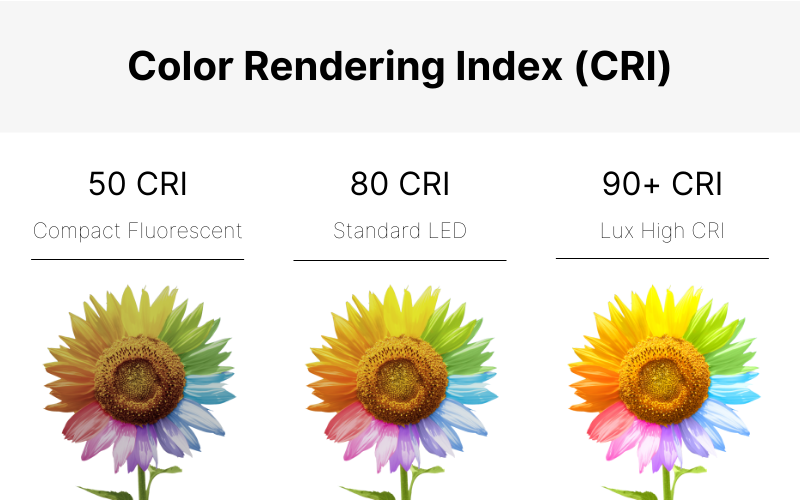
High CRI LED lighting with color temperatures ranging from about 5200K-6400K is the closest that artificial lighting can come to natural sunlight.
More and more homes, offices, classrooms and other spaces in which people spend a lot of time are being equipped with tunable-white LED lighting that automatically mimics sunlight throughout the day. But it doesn’t have to be a matter of LED light vs sunlight. Rather, using a combination of the two elements is ideal.
By changing from soft, warm amber in the morning to bright, cool white during the day and then back to amber in the evening, this counteracts the disruptive effect of conventional artificial lighting on the body’s circadian rhythm.
Features and benefits of high CRI LED lighting
High CRI (90+) LED lighting has many features that make it ideal for offices:
- It is energy efficient, with a lifespan of up to 50,000 hours, requiring low maintenance and reducing electricity costs
- It produces high-quality light with an extremely accurate color rendering index of 90 or higher, which is similar to natural sunlight in brightness and color
- With color tuning and dimming capabilities, you can adjust the intensity and quality of indoor lighting as needed
- LED bulbs do not emit ultraviolet (UV) radiation or contain mercury, and they reduce carbon emissions
High CRI (90+) LED lighting also:
- Provides excellent color rendering, which is especially important for tasks that require accurate color perception, such as graphic design, photography or painting
- Helps reduce eye strain and fatigue caused by long working hours in poorly illuminated workspaces.
- Can help increase productivity and concentration levels throughout the day
- Generates low heat so there is no risk of overheating or discomfort in the workspace
- Keeps a comfortable indoor air temperature year-round
How to simulate sunlight in an office with LED lighting
Working at a desk in an office can be exhausting when there isn’t enough sunlight. Natural light is essential for restoring energy and inspiring creativity. However, when sunshine is unavailable, there are still ways to simulate sunlight.
The following tips depend on the layout of individual offices – some simply don’t have floor-to-ceiling windows or an option to add a skylight – and here’s how to simulate sunlight in an office:
- Adjust blinds to let in as much natural daylight as possible
- Strategically place LED full-spectrum light bulbs around a room
- Place sunlight reflection products near windows or walls for added sunlight-simulated brightness
- Use color-tunable lighting that mimics sunlight and adjusts its intensity based on the time of day and seasons
- Increase the brightness of LED lights – brightness is measured in lumens and sunlight has a luminescence of around 20,000 lumens
- Adjust the color temperature of LED bulbs to 5500K to create daylight ambiance
- Use variety in lighting sources – mix LED bulbs with sunlight or skylights and incorporate accent lights that provide indirect lighting
- Use wall sconces throughout the office to counteract the glare of direct overhead illumination
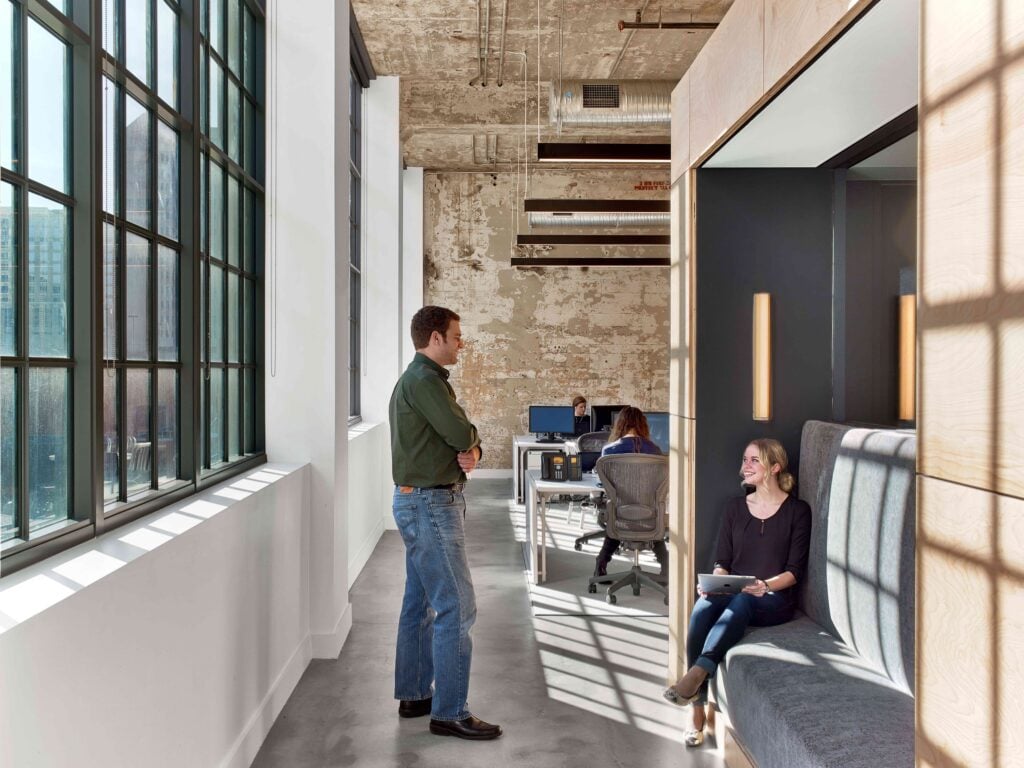
Conclusion: Using Indoor Lighting that Mimics Sunlight
The health benefits of sunlight are well known. But if you can’t work outdoors, then using indoor lighting that mimics sunlight – i.e., LED lighting with color tuning and high CRI (90+) – can simulate some of the benefits by providing accurate color rendition and reducing eye strain during long periods of concentrated work.
Besides being more energy efficient than other artificial lighting solutions, LED lighting used in combination with skylights and strategically placed lamps and other lights is an excellent way to bring lighting that fosters a healthy circadian rhythm in any office setting.
Natural Light LED FAQ
Yes, LED lights can mimic sunlight to some extent by providing accurate color rendition and reducing eye strain. LED lighting with a high Color Rendering Index (CRI) rating of at least 90 can provide the health benefits of natural sunlight.
LED lighting with a high CRI rating of 90 or higher. LEDs can mimic the hue and intensity of natural sunlight and help to maintain the human body’s natural circadian rhythm because LED components allow for finer adjustments of color, brightness and intensity.
Simulating sunlight in an office can be achieved by using LED lights with a high CRI rating of 90+ to ensure accurate color rendition. The placement of the LEDs should imitate those found outdoors, strategically placed on the ceiling or walls around desks for optimal coverage.
Use color-tunable lighting that adjusts the brightness and temperature of light to mimic sunlight throughout the day. Brightness is measured in lumens and sunlight has a luminescence of around 20,000 lumens, while 5000K creates a more daylight-like ambience.
Use a daylighting system – i.e. a daylight-responsive lighting control system – to take full advantage of sunlight when it’s available or electrical light when it’s not.
In combination with LED lighting, incorporating skylights into your office layout is an excellent way to bring natural sunlight indoors and provide health benefits associated with exposure to daylight.
Alcon Lighting creative director and co-founder David Hakimi works to improve lighting through research, development and education. David strives for efficiency in lighting, affording architects, lighting designers and engineers the ability to maximize LED lighting design and application. David is a graduate of the University of California, Los Angeles, where he received a Bachelors in history. David also studied lighting design at IES in Los Angeles. He traces his and Alcon Lighting’s commitment to innovation, accountability, quality and value to lessons learned from his father, Mike Hakimi, a lighting craftsman, salesman and consultant in Southern California for more than four decades. Today’s lighting for commercial use requires a deep, complete understanding of smart lighting systems and controls. David takes pride in his lighting, energy controls and design knowledge. He is driven by the desire to share his insights into lighting specification and application. This quest to share his knowledge was the impetus for David to create Insights, Alcon Lighting’s blog and resource center for helping the reader understand lighting and its application to space.

